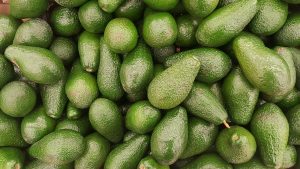
Avocados, celebrated for their creamy texture and health benefits, undergo a meticulous transportation process from Mexico to the United States to ensure they arrive fresh and ready for consumers.
This article delves into the comprehensive methods employed for transporting avocados across borders, emphasizing the strategies and technologies used to maintain quality and freshness throughout the journey.
How Are Avocados Transported To The US From Mexico?
1. Refrigerated Trucks: Ensuring Optimal Conditions
Transporting avocados from Mexico to the US via refrigerated trucks is a primary method to preserve freshness. These trucks are equipped with advanced cooling systems that regulate temperature and humidity levels. Avocados sourced from Mexican farms are carefully loaded onto pallets within refrigerated compartments, ensuring they are shielded from temperature fluctuations and external elements during transportation to the US market.
2. Shipping Containers: Secure and Controlled Environment
For larger quantities, avocados are transported in shipping containers designed to maintain a secure and controlled environment. These containers ensure avocados travel safely by sea or land from Mexico to the US. Equipped with insulation and refrigeration capabilities, they protect avocados from external factors that could compromise their quality. This method minimizes handling and ensures avocados arrive in the US market fresh and intact.
3. Air Freight: Swift Transport for Freshness
When speed is crucial, avocados are transported via air freight from Mexico to the US. Specialized containers and expedited logistics facilitate rapid delivery, preserving the freshness of avocados. This method is preferred for meeting the demand for fresh produce in US markets. Despite higher costs compared to other methods, air freight minimizes transit time, ensuring avocados reach consumers promptly and in optimal condition.
4. Sea Freight: Cost-Effective Bulk Transport
Sea freight remains a cost-effective solution for transporting large quantities of avocados from Mexico to the US. Refrigerated containers aboard cargo ships maintain consistent temperatures throughout the voyage, preserving the freshness of avocados during extended transit periods. This method supports the supply of avocados to US markets while optimizing logistical planning and reducing overall transportation costs.
5. Palletization: Efficient Handling and Storage
Efficient palletization is essential for handling avocados during transportation from Mexico to the US. Avocados are carefully stacked on pallets inside trucks or shipping containers, optimizing space and minimizing handling. This method ensures avocados are transported securely and efficiently, maintaining their quality from Mexican farms to distribution centers across the US.
6. Cold Storage Facilities: Extending Shelf Life
Throughout the transportation process, avocados may be stored in cold storage facilities to extend their shelf life. These facilities in the US are equipped with advanced refrigeration systems that maintain precise temperature and humidity levels. Cold storage prevents premature ripening and spoilage, ensuring avocados remain fresh and market-ready upon arrival from Mexico.
7. Packaging: Protection and Preservation
Effective packaging is critical in safeguarding avocados during their journey from Mexico to the US. Avocados are packed in sturdy boxes or crates that provide cushioning and ventilation, minimizing physical damage and ensuring optimal ripening conditions. Well-designed packaging solutions protect avocados from bruising and maintain their quality until they reach US consumers.
8. Temperature Monitoring: Ensuring Quality Assurance
Advanced temperature monitoring technology monitors avocados’ conditions throughout transportation from Mexico to the US. Sensors installed in trucks, shipping containers, and cold storage facilities continuously monitor temperature and humidity levels. Real-time data allows for immediate adjustments to environmental conditions, ensuring avocados maintain optimal freshness and meet US regulatory standards.
9. Quality Control: Upholding Standards
Stringent quality control measures are implemented at every stage of avocado transportation to the US. Inspections and checks assess fruit quality, detect any signs of damage or spoilage, and ensure compliance with US import regulations. Quality control protocols safeguard the reputation of avocado suppliers and assure US consumers of receiving high-quality, nutritious produce.
10. Logistics Management: Coordination for Efficiency
Effective logistics management is crucial for the seamless transportation of avocados from Mexico to the US. Detailed planning, coordination of transport modes (trucks, ships, or planes), and scheduling of deliveries ensure timely arrivals and minimize transit delays.
Efficient logistics management optimizes the supply chain, reduces transportation costs, and enhances overall operational efficiency. By streamlining transportation logistics, avocado suppliers ensure fresh, high-quality produce reaches US markets efficiently.
How Are Avocados Transported To The US From Mexico FAQs
- What are the main methods used to transport avocados from Mexico to the US? Avocados are primarily transported via refrigerated trucks and shipping containers. Air and sea freight are also utilized for faster or larger shipments.
- How do refrigerated trucks contribute to avocado transportation? Refrigerated trucks maintain a consistent temperature environment, typically around 45-55°F (7-13°C), which is ideal for preserving the freshness of avocados during transit.
- What role do shipping containers play in transporting avocados to the US? Shipping containers provide a secure and controlled atmosphere for bulk transport of avocados. They help maintain temperature and humidity levels necessary for preserving avocado quality.
- Are avocados ever transported by air from Mexico to the US? Yes, avocados are sometimes transported by air, especially for high-demand markets or when rapid delivery is required to maintain freshness.
- How does sea freight contribute to avocado transportation? Sea freight is used for larger shipments of avocados. It provides a cost-effective option for transporting bulk quantities over longer distances.
- What measures are taken to ensure the quality of avocados during transportation? Avocados are carefully palletized and stored in cold storage facilities at transit points. Rigorous quality control checks are implemented to ensure that only high-quality avocados reach US markets.
- Why is efficient transportation crucial for avocados from Mexico to the US? Efficient transportation ensures that avocados arrive in US markets promptly and in optimal condition, meeting consumer demand for fresh and nutritious produce year-round.
Final Thoughts
In conclusion, the transportation of avocados from Mexico to the US involves a sophisticated network of methods designed to preserve freshness and quality. From refrigerated trucks and shipping containers to air and sea freight options, each method plays a crucial role in ensuring avocados reach US markets in optimal condition.
Efficient palletization, cold storage facilities, and rigorous quality control measures further contribute to maintaining the integrity of the fruit throughout its journey from Mexico to the US.
As consumer demand for avocados continues to rise, mastering these transportation strategies remains essential. For suppliers and consumers in the US, understanding these processes ensures a reliable supply of delicious avocados year-round.